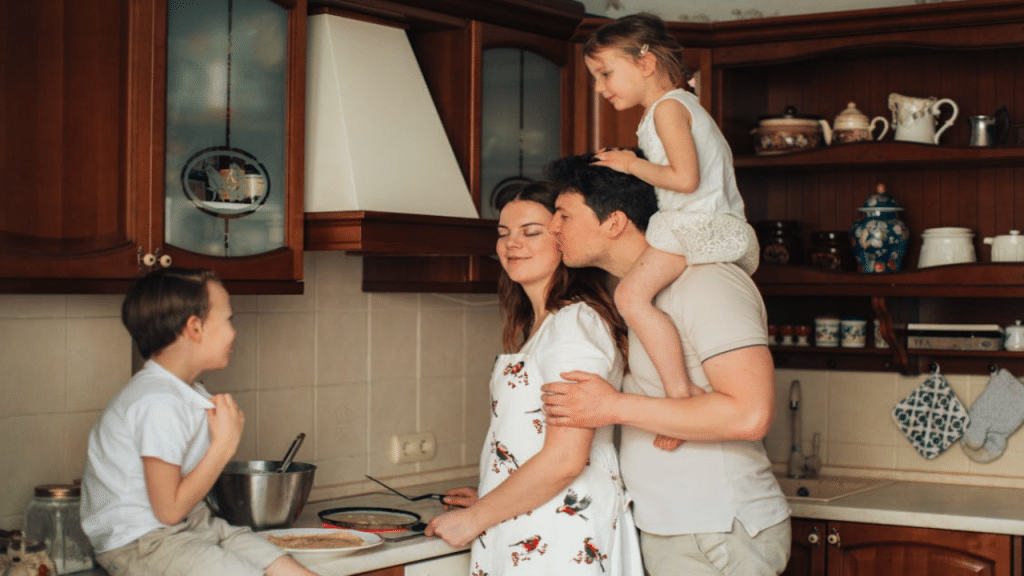
Emotional safety is the invisible foundation of every healthy marriage. It’s that deep sense of being seen, heard, and valued without fear of judgment or rejection. According to research from the Gottman Institute, emotional safety allows couples to repair conflicts faster, build trust that lasts, and feel more deeply connected over time. Without it, communication breaks down, affection fades, and defensiveness becomes the default. In other words, love might start with chemistry–but it thrives on safety. Here’s how to build that kind of emotional security with your spouse.
1. Create a No-Blame Zone

Blame kills emotional safety faster than almost anything else. When one partner constantly points fingers, the other goes into defense mode–making it impossible to solve problems together. Instead of “You never listen,” try “I feel unheard when…” It’s a small language shift that opens the door to collaboration instead of conflict. Gottman research shows that gentle startups–beginning discussions softly and respectfully–are one of the most reliable predictors of long-term relationship health.
2. Validate Feelings, Even When You Disagree

You don’t have to agree with your partner’s emotions to acknowledge them. Validation sounds like: “I can see why that upset you,” or “That makes sense.” It’s not about taking the blame–it’s about showing that their inner world matters to you. According to the Gottman Institute, validation is a key part of “turning toward” your partner’s emotional bids–those small moments when they reach for connection. Miss those moments too often, and emotional safety erodes.
3. Repair After Conflict–Don’t Just Move On

After an argument, couples often try to sweep things under the rug. But skipping the repair process leaves emotional wounds unhealed. Gottman’s research highlights repair attempts–those moments when a partner reaches out with humor, affection, or a peace offering–as crucial to rebuilding safety. A simple “I’m sorry for how I spoke earlier” or “Can we start over?” can reset the emotional tone. It’s not about perfection; it’s about showing that connection matters more than being right.
4. Prioritize Emotional Check-Ins

Just as you’d maintain your home or car, emotional safety requires regular maintenance. Set aside time each week to check in about how you’re both doing–not just logistically, but emotionally. Ask open-ended questions like, “How have you been feeling about us lately?” or “Is there anything I can do better for you this week?” These check-ins prevent resentment from silently building and signal that your relationship is a living, breathing priority.
5. Replace Criticism with Curiosity

When you feel frustrated, it’s easy to default to criticism–but curiosity keeps you connected. Instead of, “Why would you do that?” try, “Help me understand what you were thinking when…” Curiosity softens tension and shows respect for your partner’s perspective. Gottman’s studies reveal that criticism is one of the “Four Horsemen” that predict relationship breakdown, while curiosity builds empathy and de-escalates defensiveness.
6. Show Appreciation Daily

Small expressions of gratitude have massive emotional impact. Say thank you when your spouse makes coffee, folds laundry, or simply shows up for you emotionally. Appreciation communicates, “I see you, and you matter.” Gottman calls this building your “emotional bank account”–the ratio of positive to negative interactions that determines relationship stability. The higher your balance, the more resilient your marriage becomes during tough times.
7. Keep Emotional Secrets Off the Table

Honesty isn’t just about facts–it’s about emotional transparency. If you’re struggling, anxious, or distant, talk about it. Emotional secrecy breeds mistrust, and partners can sense when something’s off. Gottman research shows that trust is built through attunement–the ongoing process of sharing feelings and staying emotionally connected even when things are hard. Vulnerability invites closeness, while silence creates distance.
8. Learn Each Other’s Triggers

Every person carries emotional hot buttons shaped by their past. Maybe your partner shuts down when they feel criticized, or you get defensive when you feel ignored. Understanding these triggers helps both of you avoid landmines and respond with compassion instead of blame. The Gottman Institute calls this “knowing your partner’s inner world”–a skill that turns conflict into an opportunity for healing and understanding.
9. Use Gentle Humor to Diffuse Tension

Laughter is one of the most underrated repair tools in relationships. A well-timed smile or inside joke can shift the emotional climate from hostile to hopeful. The key is gentleness–never humor at your partner’s expense. Gottman’s research found that couples who can laugh together during conflict have higher relationship satisfaction and recover faster from disagreements.
10. Build Rituals of Connection

Rituals–like morning coffee together, bedtime chats, or Sunday walks–act as anchors of emotional security. These predictable moments reassure both partners that even amidst chaos, connection remains constant. Gottman couples who create shared rituals report stronger intimacy and lower stress. Think of them as emotional glue that holds your marriage steady when life gets unpredictable.
11. Avoid Emotional Stonewalling

Stonewalling–when one partner shuts down or withdraws during conflict–creates emotional distance that’s hard to repair. If you feel overwhelmed, say so: “I need a short break, but I’ll come back when I can listen better.” Gottman research shows that physiological self-soothing is essential for repair. Taking a pause is healthy; disappearing emotionally is not.
12. Make Repair Attempts Visible

Don’t assume your partner knows you’re trying to make things better–say it out loud. A simple, “I’m trying to understand you,” can soften defensiveness and reopen communication. Visible repair attempts remind your spouse that the goal is connection, not victory. Gottman’s studies show that happy couples recognize and respond to these repair bids, while struggling couples often miss them.
13. Create a Safe Space for Vulnerability

Emotional safety flourishes when both partners can share fears, insecurities, and dreams without ridicule. This means listening without rushing to fix or minimize. Vulnerability is not weakness–it’s the glue of intimacy. Couples who can be emotionally naked with each other develop a bond that’s resilient against external stress and internal doubt.
14. Practice Non-Defensive Listening

When your partner brings up an issue, resist the urge to interrupt or counterattack. Non-defensive listening means focusing on understanding before responding. Phrases like “Tell me more about that” or “I want to understand” slow things down and calm emotions. Gottman’s findings show that this kind of active listening transforms conflict from a threat into a bridge to deeper connection.
15. Honor Each Other’s Emotional Boundaries

Emotional safety requires respecting where your partner ends and you begin. Don’t push for closeness when they need space, and don’t retreat when they need reassurance. Boundaries aren’t walls–they’re clarity. When both partners feel their needs are respected, they can show up more authentically and lovingly.
16. Be Each Other’s Soft Place to Land

At the end of a hard day, your spouse shouldn’t have to brace for criticism or indifference. Being a “soft place to land” means offering empathy, warmth, and reassurance when life gets tough. Gottman’s research shows that couples who turn toward each other in stress–rather than away–maintain stronger trust and emotional safety.
17. Commit to Emotional Growth Together

Emotional safety isn’t a one-time achievement–it’s a lifelong practice. As individuals evolve, so must the relationship. Read books, attend workshops, or simply talk about how you can grow together emotionally. Growth-minded couples adapt instead of drift apart. The more you both invest in understanding yourselves and each other, the deeper and safer your love becomes.






Ask Me Anything